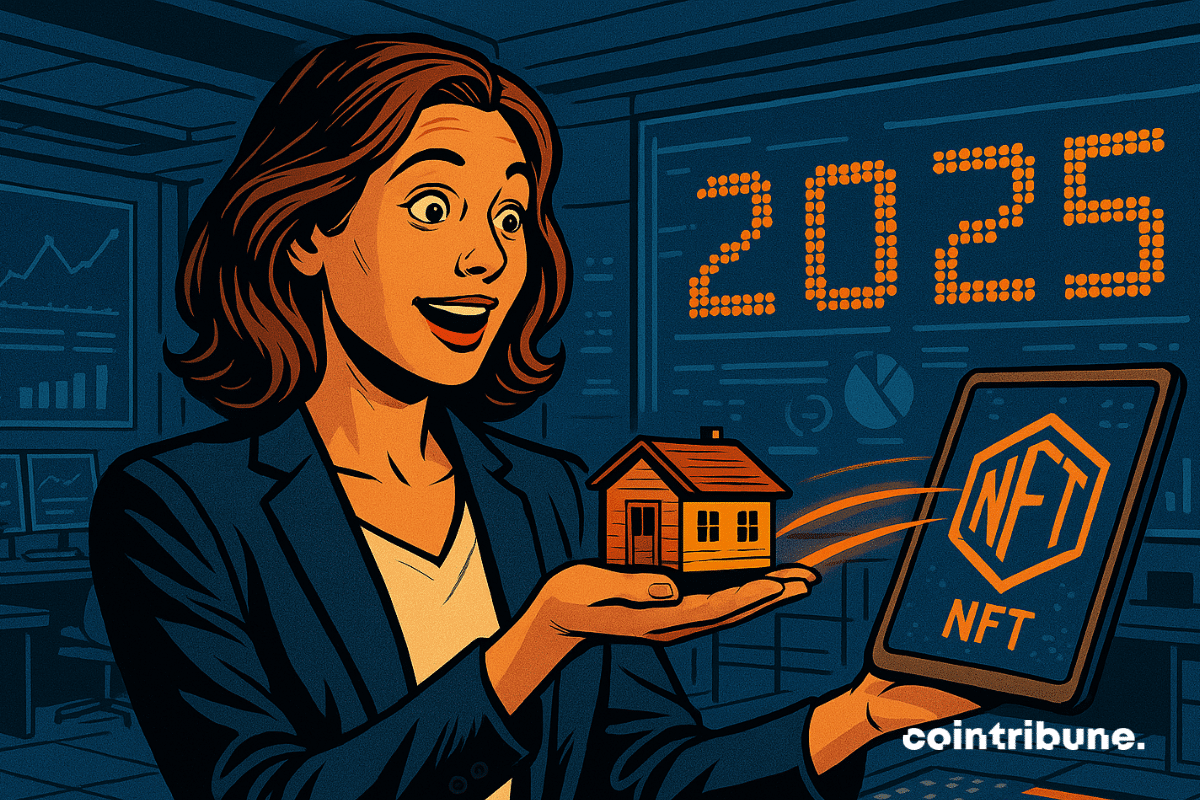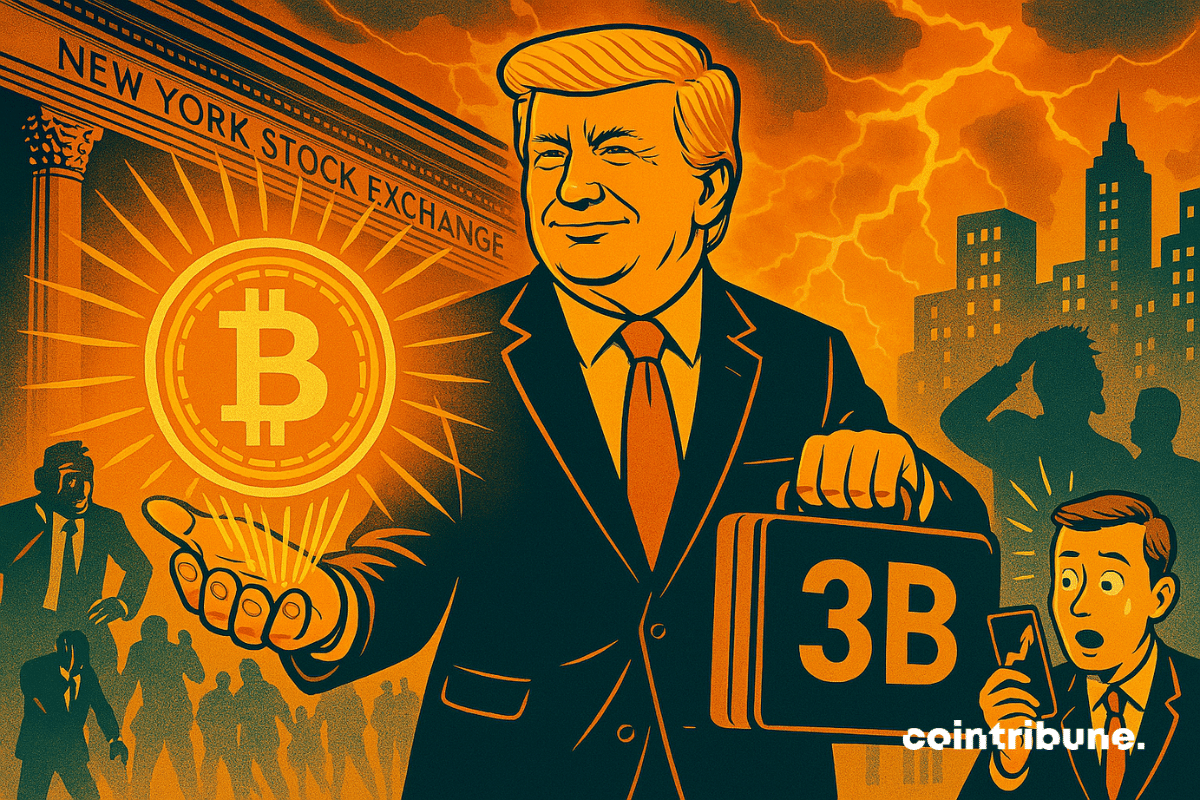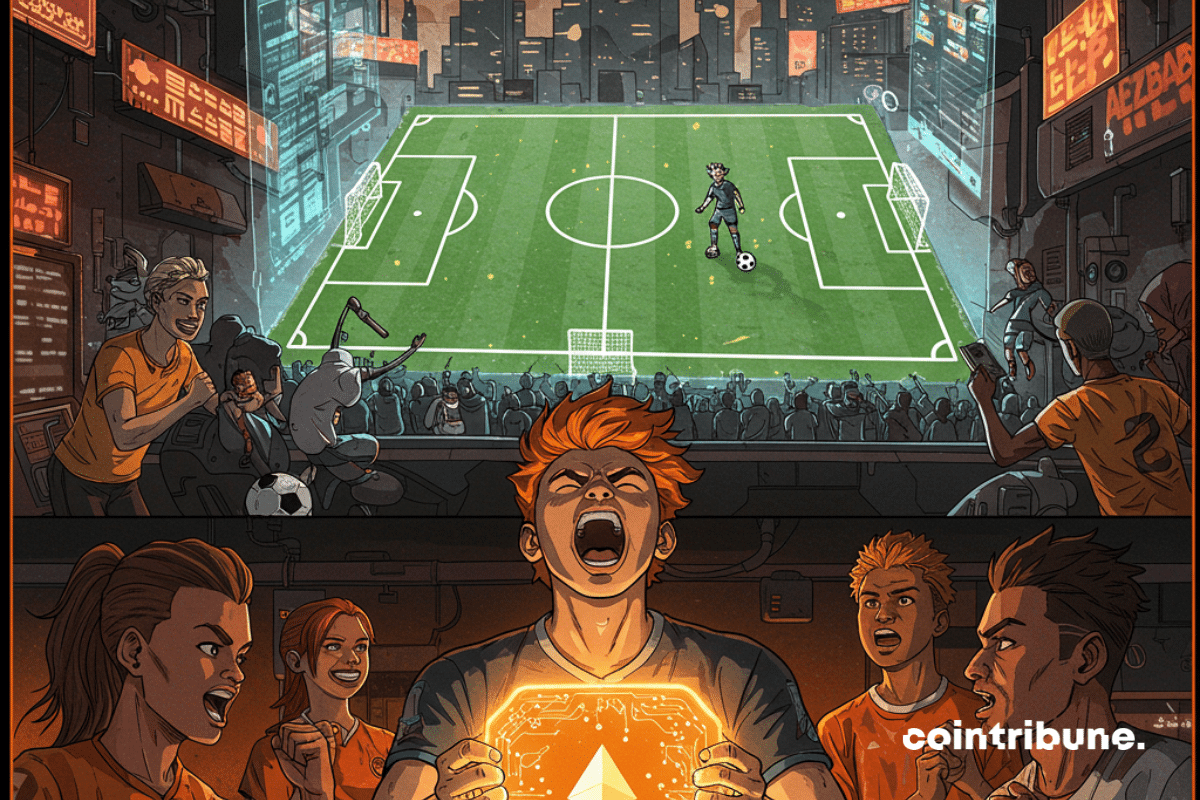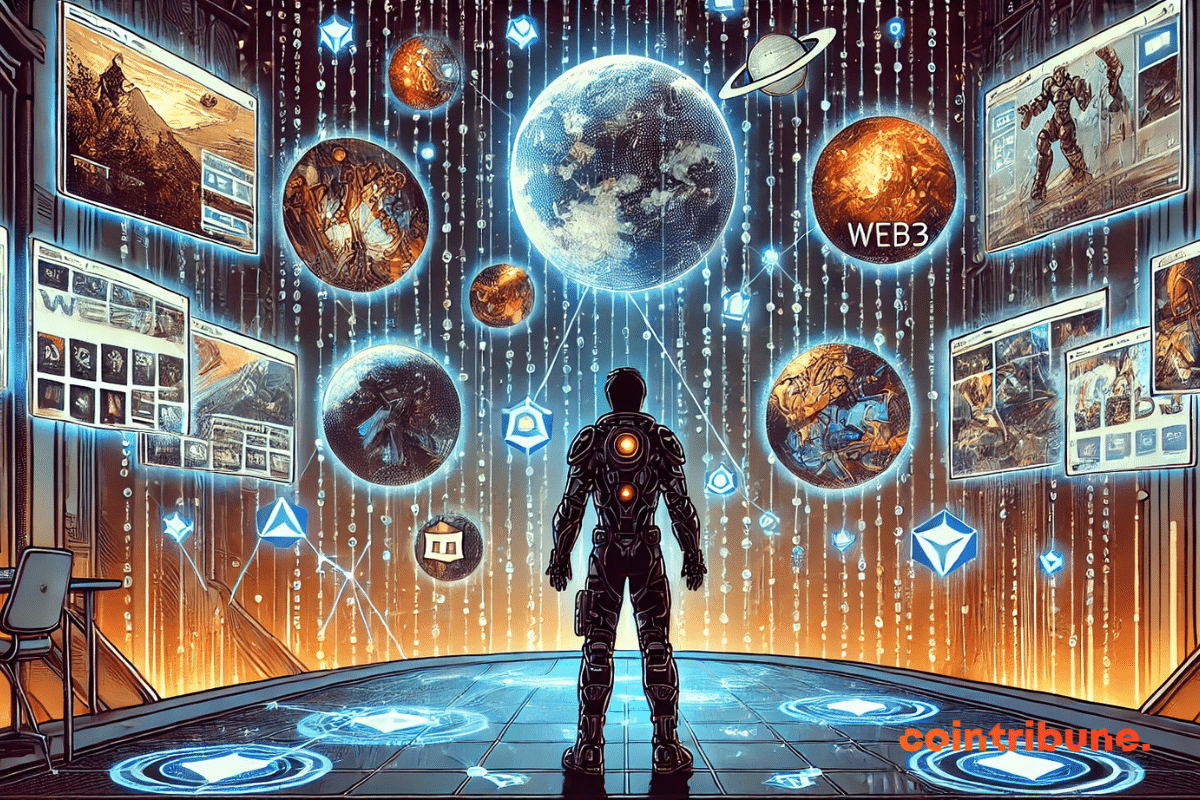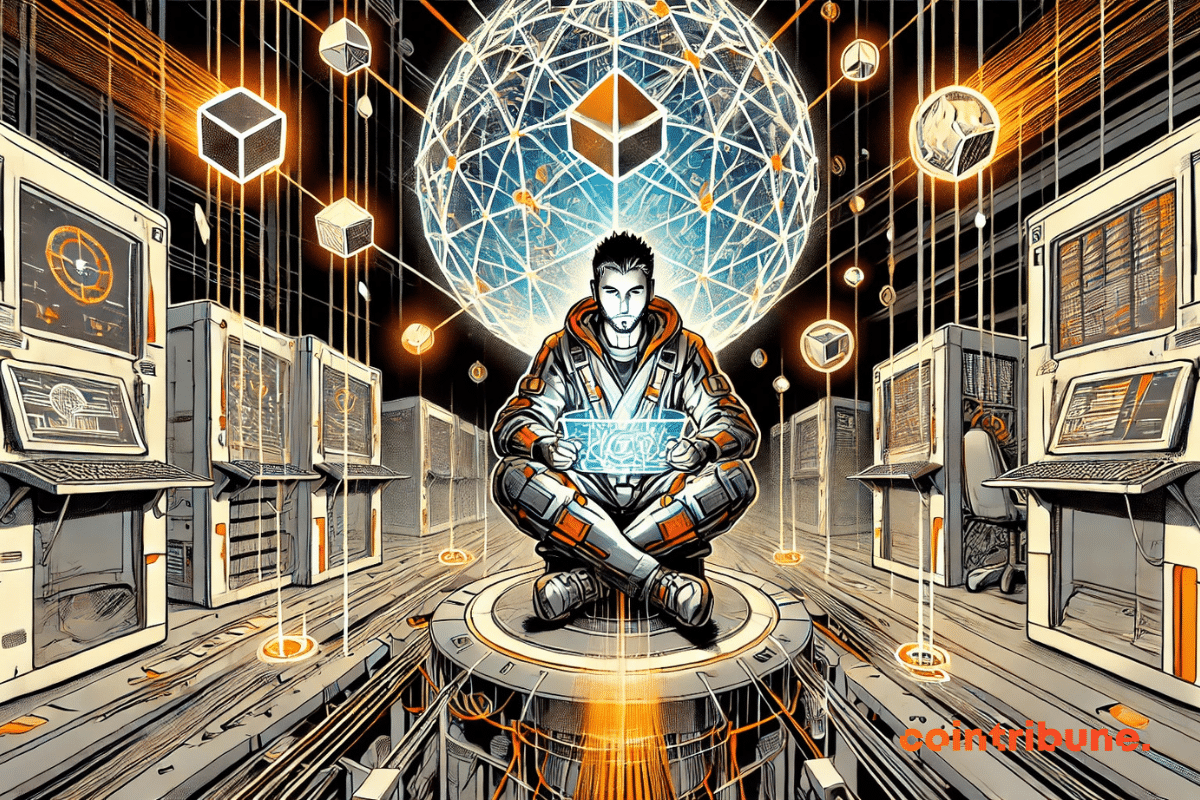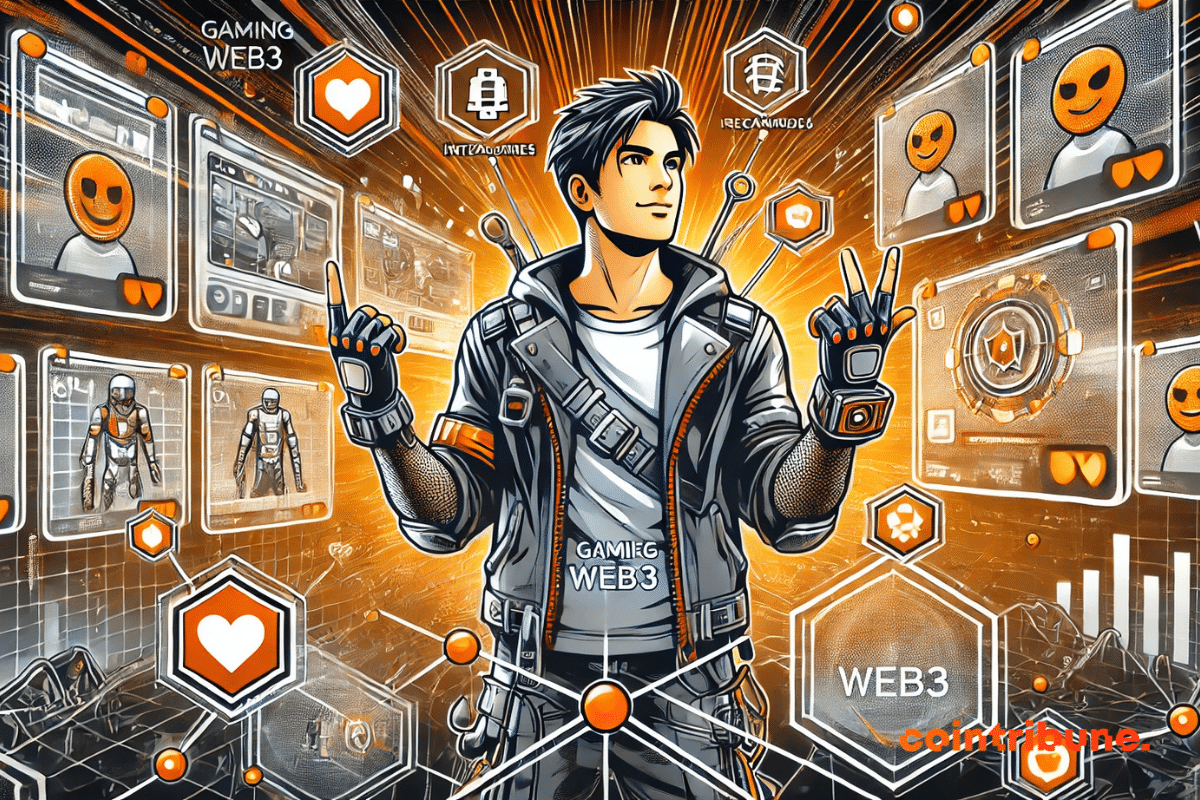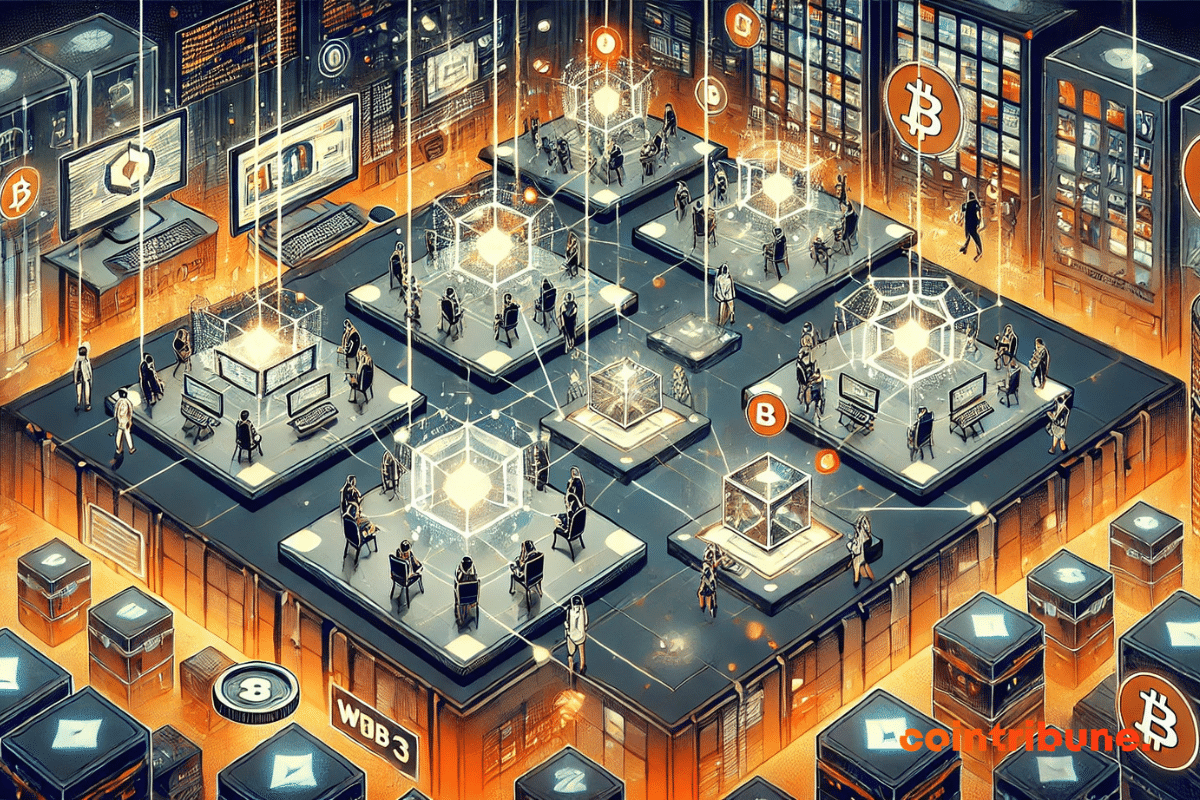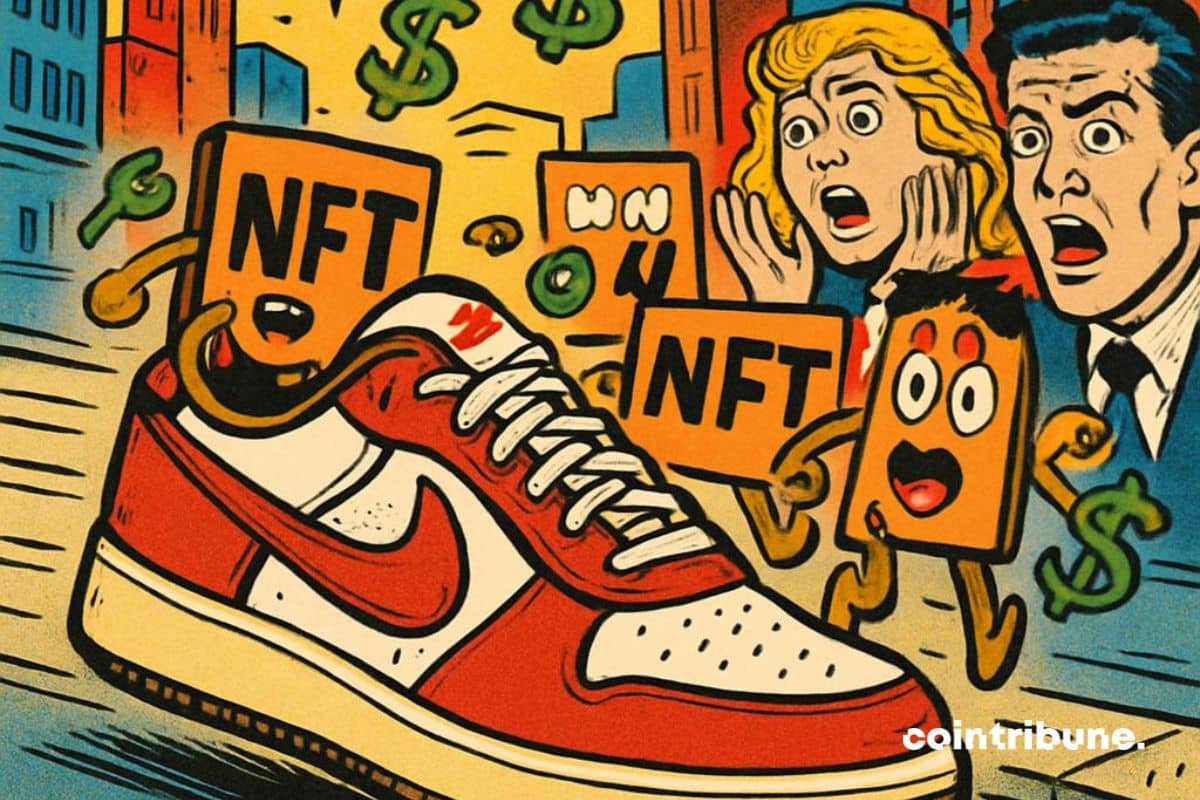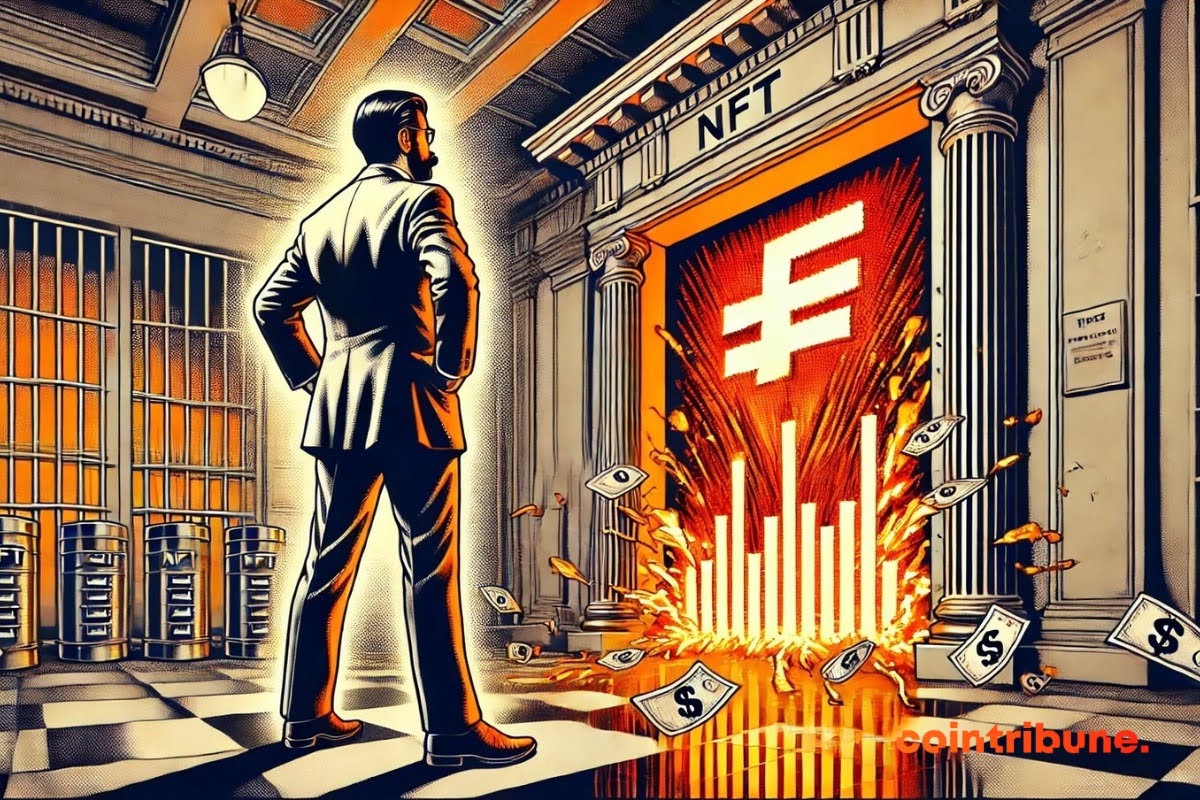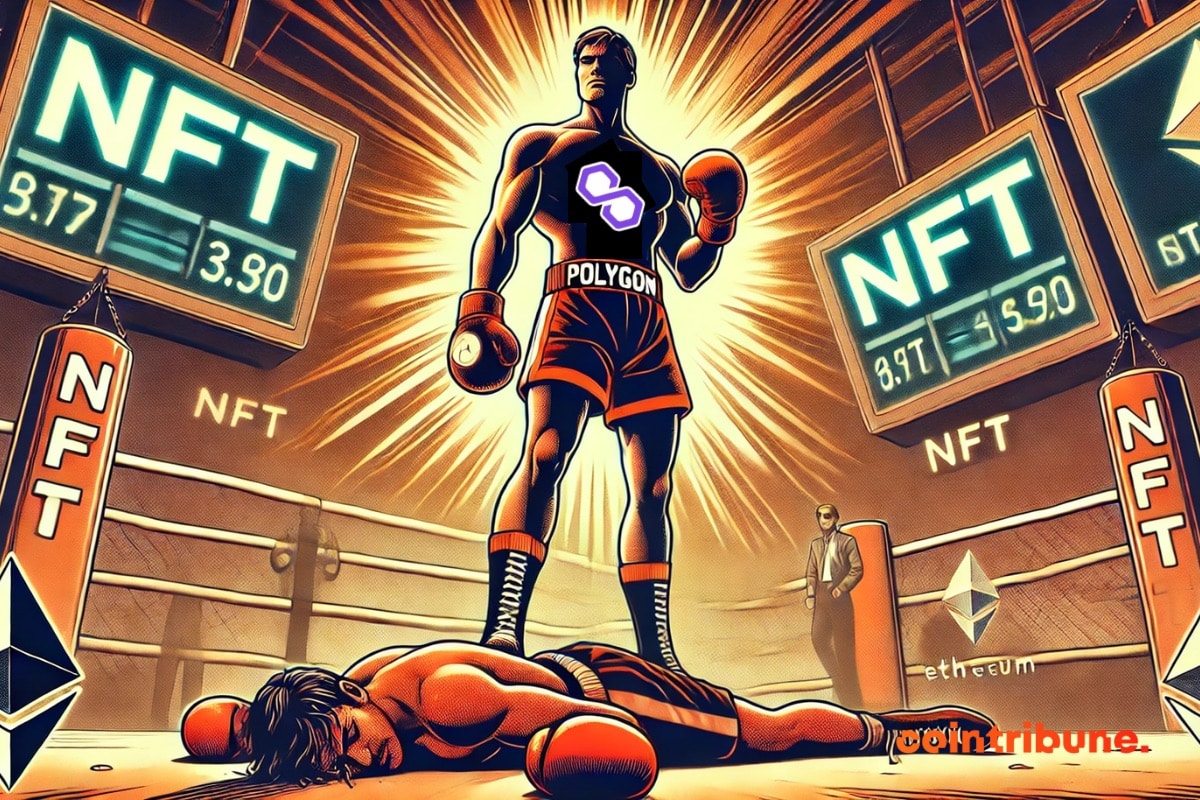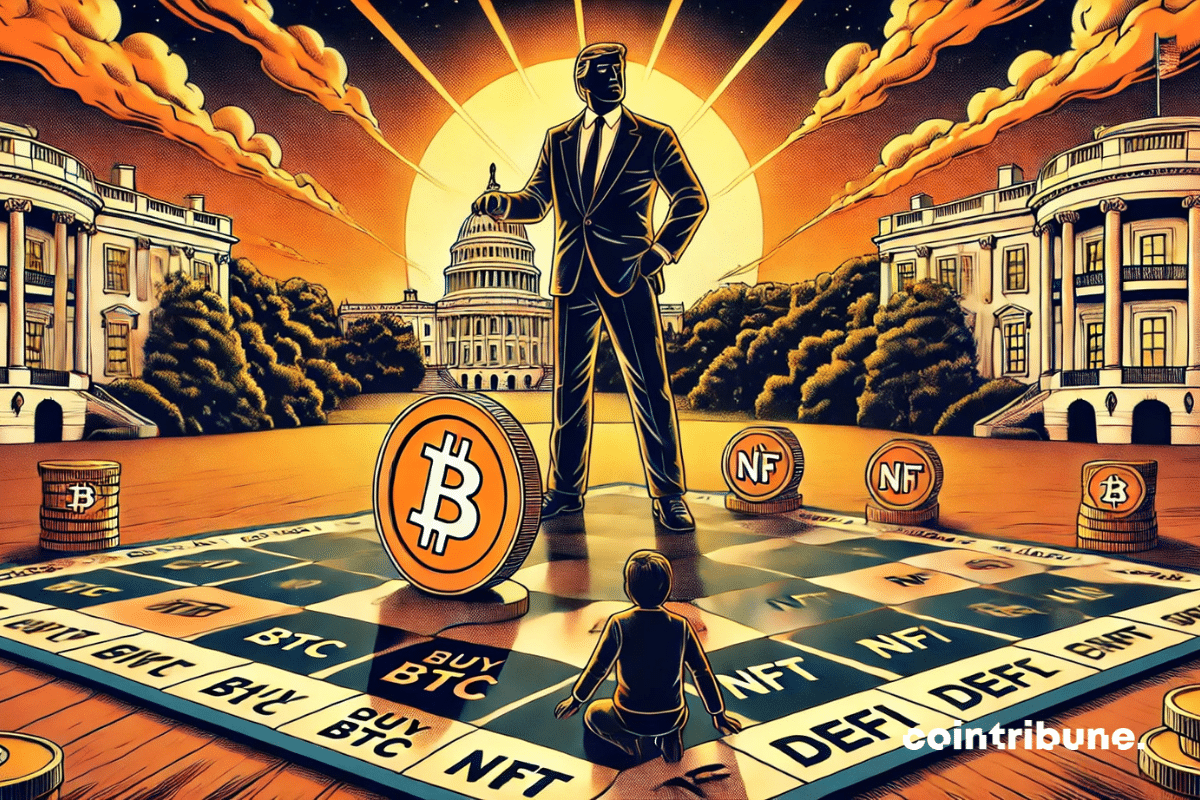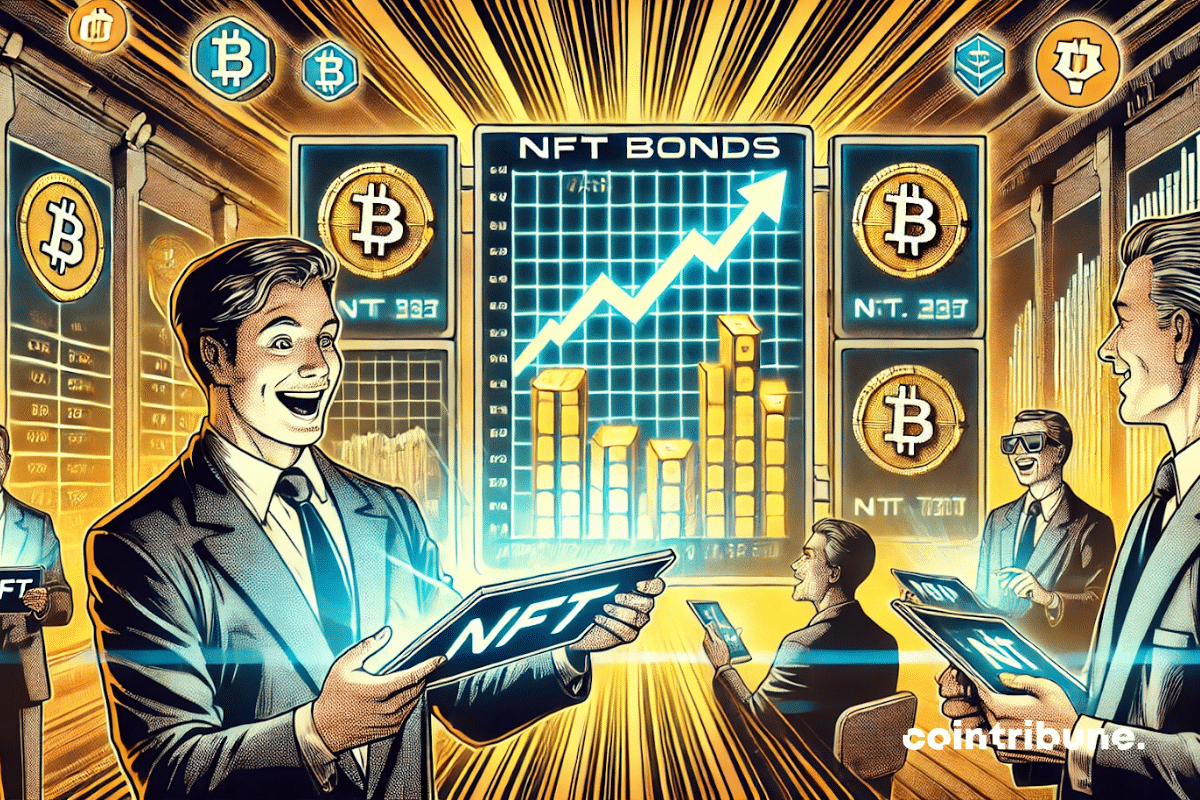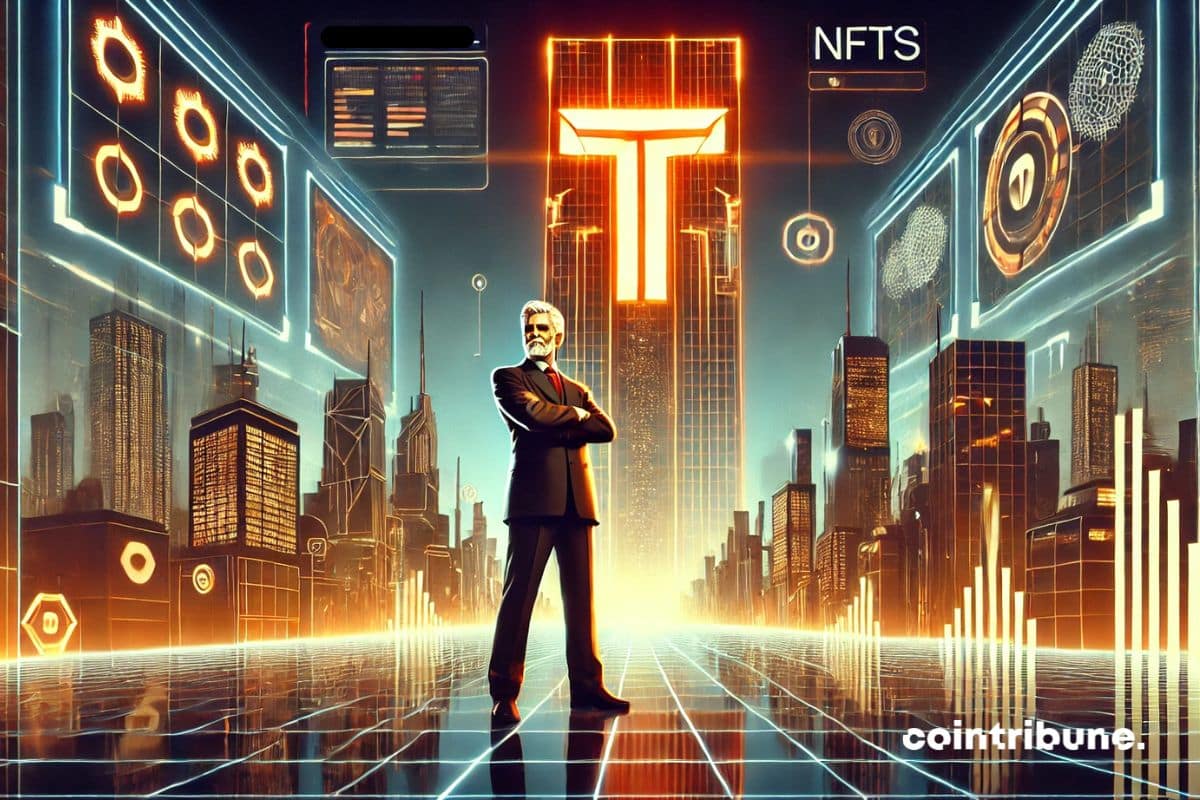NFTs have lost their magic, but tokenized real assets could give them a second wind. Is crypto playing its last card?
Theme Non-Fungible Token (NFT)
Trump accelerates in crypto: raising $3 billion for bitcoin. Amid scandals and strategy, the Trump saga in blockchain continues to shake Washington.
Imagine this: you’re among the 220 lucky winners invited to dine with Donald Trump. The email lands in your inbox. Your heart races. Black tie recommended. You’re in. On the other side, thousands are fuming. Their wallets didn’t make the cut. No dinner. The verdict is in. The $TRUMP memecoin has revealed its winners… and its losers. In the crypto world, this contest marks a turning point—both spectacular and controversial.
Doodles promised mountains and wonders with its airdrop. The result: a free fall worthy of a failed soufflé in the crypto kitchen.
It is rare for an NFT project to still create an authentic thrill in the crypto universe. Yet, Doodles has just made a splash. In just 24 hours, this colorful collection saw its sales soar by 97%, flirting with $1.1 million. This surge is no coincidence: on the horizon, a certain crypto DOOD is tantalizing investors.
The round ball is entering a new dimension. Forget simple passes and sliding tackles: FIFA has taken a step further into the metaverse. On April 30th, the global football organization announced the creation of a homegrown blockchain, simply called "FIFA Blockchain." A decision that, at first glance, seems purely technical. But behind the lines of code, a whole crypto strategy is taking shape, much bolder than it appears.
Web3 marks a new era for the video game industry. It is based on blockchain, decentralization, and digital ownership. This model transforms the way players interact with games and own their assets. The rise of Web3 games has led to the creation of dedicated platforms, allowing access to these new experiences. Some prioritize exploration and creation, while others focus on competition and strategy. This article presents the best Web3 gaming platforms, their specifics, advantages, and the challenges they must face.
Play-to-Earn (P2E) allows players to earn tokens or NFTs that can be traded on specialized marketplaces. This model is based on blockchain technology, which ensures transparency of transactions and real ownership of digital assets. Unlike traditional games, it offers an open economy where players can freely sell or use their earnings. With the rise of cryptocurrencies, P2E is transforming the gaming industry by integrating a financial dimension. This article presents the best Play-to-Earn games in 2025. It explores the blockchains and platforms that support them and analyzes the challenges, opportunities, and prospects of Web3 gaming.
Web3 marks a significant transformation of the Internet. It relies on decentralized technologies like blockchain to provide users with greater autonomy. This approach alters data management and strengthens digital ownership. In the video game industry, Web3 introduces innovative platforms and games. These new infrastructures grant players complete control over their assets and allow for the emergence of open virtual economies. Web3 games disrupt traditional models by integrating NFTs, cryptocurrencies, and smart contracts. This article analyzes these advancements, explains how they work, and examines their influence on the future of gaming.
Web3 gaming relies on blockchain technology to offer a more transparent and autonomous gaming experience. This technology securely records digital assets and transactions. Web3 promises decentralization by eliminating intermediaries and granting players true ownership of their virtual items. On their part, NFTs and smart contracts ensure this autonomy and promote an open economy. However, this decentralization remains theoretical in many cases, as some games retain centralized elements. This article explores the reality of Web3 gaming by analyzing its actual level of decentralization.
NFTs (Non-Fungible Tokens) are transforming digital ownership. They ensure the uniqueness and authenticity of virtual assets on the blockchain. This technology is gradually establishing itself in the gaming industry by introducing new economic models. NFT games allow players to own and exchange virtual items outside traditional platforms. This evolution is changing the interactions between players and developers. This article explores the benefits of NFTs, their challenges, community criticism, and their future prospects. This analysis highlights their impact on the video game industry and upcoming trends.
Smart contracts automate the execution of game rules without intermediaries. They ensure transparency, security, and immutability of transactions. In blockchain games, these contracts allow players to truly own their digital assets. Developers integrate this technology to enhance trust and prevent fraud. The blockchain eliminates risks of data manipulation and alteration. Smart contracts facilitate exchanges between players and create automated reward mechanisms. Their adoption is transforming the gaming industry and offering a new decentralized economy. These innovations pave the way for fairer gaming experiences. This article provides an overview.
Web3 gaming relies on blockchain and decentralization. It allows players to own digital assets and interact directly with the game's economy. This approach is transforming the video game industry by offering more transparency and control to users. Interoperability plays a key role in this ecosystem. It enables players to use their virtual items across multiple compatible games. This innovation promotes continuity of experiences and enhances the value of digital assets. This article explores the importance of interoperability in Web3 gaming. It analyzes its benefits for players, its technical challenges, and the obstacles that developers must overcome to make it more accessible.
Video games have evolved from the early consoles to connected virtual worlds. Innovations have transformed the player experience by integrating online features and virtual economies. Web3 brings a new revolution. It is based on blockchain, decentralization, and true ownership of digital assets. This technology enables players to control their items and interact directly with the game economy. This article explores the advantages of Web3 gaming. It highlights the opportunities available to players, particularly in terms of ownership, monetization, interoperability, and community engagement.
Web3 gaming is based on blockchain, NFTs, and cryptocurrencies. Unlike traditional games, it offers true ownership of digital assets and promotes decentralized economies. The rise of Web3 is transforming the video game industry. Many studios are exploring this technology to create interactive experiences. The growing adoption of blockchains enhances transparency and strengthens player engagement. This article explains how Web3 gaming works. It details its technologies, business models, and challenges. It also explores the future perspectives of this industry in the Web3 era.
Nike is in turmoil. Accused of abandoning its NFT investors after the abrupt closure of its RTFKT crypto division, the sports giant is facing a class action in the United States. More than 5 million dollars are being sought for misleading practices and the sale of unregistered securities.
The traditional bond market remains complex, opaque, and reserved for an elite. Credefi is shaking up these norms by launching NFT Bonds, an innovative solution that makes investing in corporate bonds accessible, transparent, and profitable for everyone, thanks to the tokenization of real assets and the power of DeFi.
Polygon surprises the NFT market by surpassing Ethereum with a collection backed by physical assets. This performance marks a turning point in the industry, where the tokenization of real objects is increasingly attracting investors seeking tangible value and blockchain security.
The Trump family crypto game inspired by Monopoly: a project that could transform digital real estate. Details here!
The NFT market begins 2025 on a bitter note, with a brutal 63% drop in sales. Sector icons, such as CryptoPunks and Bored Ape Yacht Club, are collapsing drastically! Yet, amid this chaos, some unexpected collections are emerging, redefining the rules of an ecosystem in full transition.
Credefi Finance is set to redefine the investment landscape by launching the first NFT Bonds. This innovative product bridges traditional finance and blockchain technology, making high-yield investments accessible to a wider audience.
Commissioner Hester Peirce, now head of the SEC's crypto task force, announced that projects using NFTs as a funding mechanism may soon be exempt from securities regulations.
The hype has faded like a poorly minted NFT: the flamboyant tales of Bitcoin are fading away, leaving only the echo of a promise sold too soon.
The evolution of the financial market is following an increasingly digital trajectory, and NFT Bonds (tokenized bonds in the form of NFTs) are emerging as a major innovation. In a world where blockchain is redefining access to financial instruments, players like Credefi are taking a pioneering role by integrating these bonds onto the blockchain, making these products accessible and liquid.
As Bitcoin stumbles and altcoins shake, Shiba Inu rises, defying panic and swearing loyalty to its unwavering ecosystem dream.
The NFT eldorado has turned into a frozen desert: 13.7 billion in volumes vanished, a crash worthy of the most beautiful digital illusions. Who will still bet on these mirages?
The Trump Organization, the company led by the family of current American president Donald Trump, is making a bold move into the digital realm. According to a recent filing with the United States Patent and Trademark Office (USPTO), the organization has submitted a request to register the trademark "Trump" as part of an ambitious expansion into NFTs and the metaverse.
The largest NFT marketplace in the world, OpenSea, has just announced the suspension of its new XP rewards system, introduced on January 28, following a wave of criticism from its community. This decision comes at a particular time when the platform is trying to reinvent itself with the recent launch of its SEA token.
OpenSea, the world leader in the NFT market, announced on February 13 the launch of its own token, called SEA. This major decision comes with a complete overhaul of the platform that has dominated the sector since 2017.
Recently, the art market has seen a surge in activity, fueled by increasing wealth and a growing appreciation for art. However, the current trajectory of the market raises questions about its sustainability. Ahead of NFT Paris 2025, 10101.art, a platform at the intersection of art, technology, and blockchain, explores the current state of the art market, the impact of digitalization on supply and demand, and the role of technology in shaping a more sustainable future for art.
